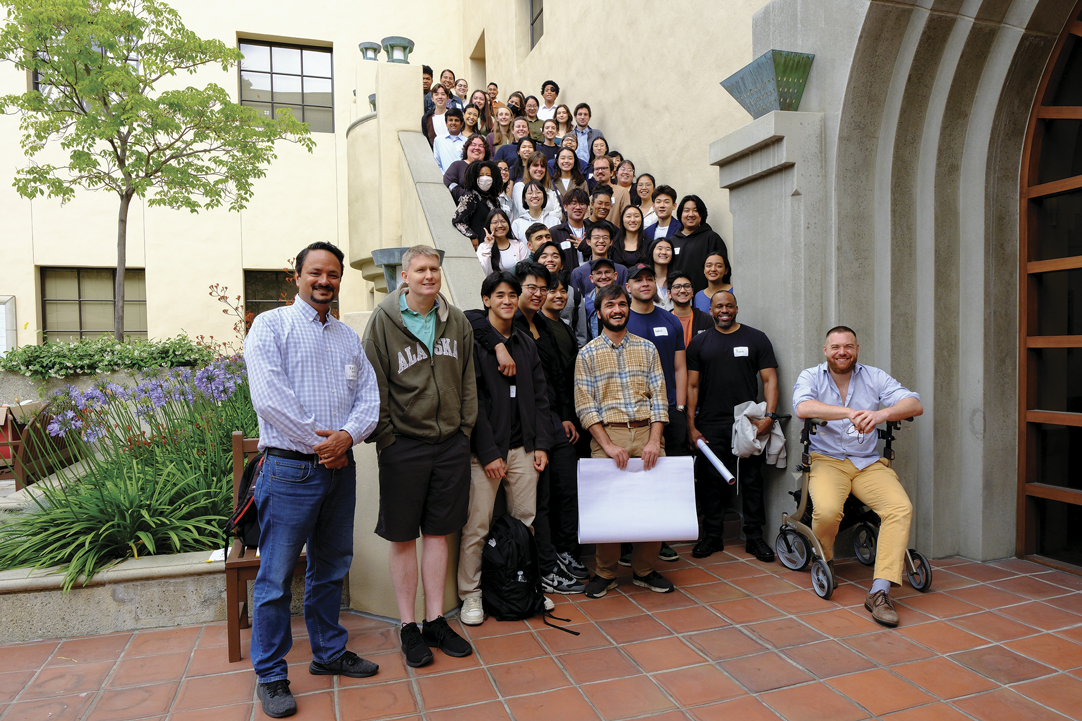A Chemistry Connection
Credit: courtesy of Scott Cushing
By Kimm Fesenmaier
Growing up in West Virginia, Scott Cushing knew little about scientific laboratories or careers, but he loved to tinker with mechanical things, and he repaired cars for money and for fun.
Lasers first captivated him as an undergraduate at West Virginia University, inspiring his career trajectory and ultimately leading him to Caltech. As an assistant professor of chemistry, Cushing builds laser-based scientific instruments. He has also started a mentoring program called Caltech Connection to give students from community colleges and other schools without broad research programs an opportunity to discover if there is something in science that sparks their interest. “I wanted to create a program for LA-area people who have that scientific knack but have no way or no confidence to make their first step into the scientific realm,” Cushing says.
Now in its fourth year, Caltech Connection pairs graduate students and postdocs at the Institute with undergraduates from Pasadena City College (PCC), Compton College, Santa Monica College, East LA College, Cal State Los Angeles, Cal State Dominguez Hills, and Charles Drew University, the latter a historically Black graduate institution in South Los Angeles. More than 60 percent of the program’s mentees come from low-income households and some 70 percent work at least part-time to pay for their education.
During the 2023–24 academic year, the program’s 50 students performed research using state-of-the-art scientific equipment and with mentors who engage in that work daily. Most mentor–mentee pairs meet once a week or once every other week. In the first half of the program, mentors often try to teach soft skills such as time management and how to read a scientific paper. In the second half, many mentors identify a specific research project for their mentees to dig into—maybe completing a calculation, coding a problem, or learning how to operate an instrument. “By the end, we hope the mentees are making independent or joint contributions to their mentor’s project,” Cushing says.
PCC student Kevin Aday applied to the program in fall 2022. He was paired with Greg Lavrentiadis, a postdoctoral scholar research associate in mechanical and civil engineering at Caltech who studies fault displacement and ground motion models of earthquakes. By early 2023, Aday was working with Lavrentiadis to correct seismic records affected by instrument response during the magnitude 6.5 and 6.8 earthquakes in Taiwan the previous year.
Next, he worked with Lavrentiadis to create a model to characterize ground motions in Groningen, Netherlands, an area that has experienced human-made earthquakes caused by the removal of natural gases. “Getting the opportunity to not only observe but take part in the work being done in the lab was the most valuable experience that I’ve had in college thus far,” says Aday, who recently began studying engineering as an undergraduate at UC Berkeley.
About 80–90 percent of students from PCC who participate in Caltech Connection and similar programs transfer to research-intensive universities compared to only 10–20 percent of their PCC peers. “The mentees are incredible,” says Tiffany Kimoto, executive director of the Kavli Nanoscience Institute at Caltech, who serves as an administrator for the program.
“I’ve watched some folks start off as shy students ... and develop into stellar graduate researchers at top-rate institutions and leaders among their peers.”

